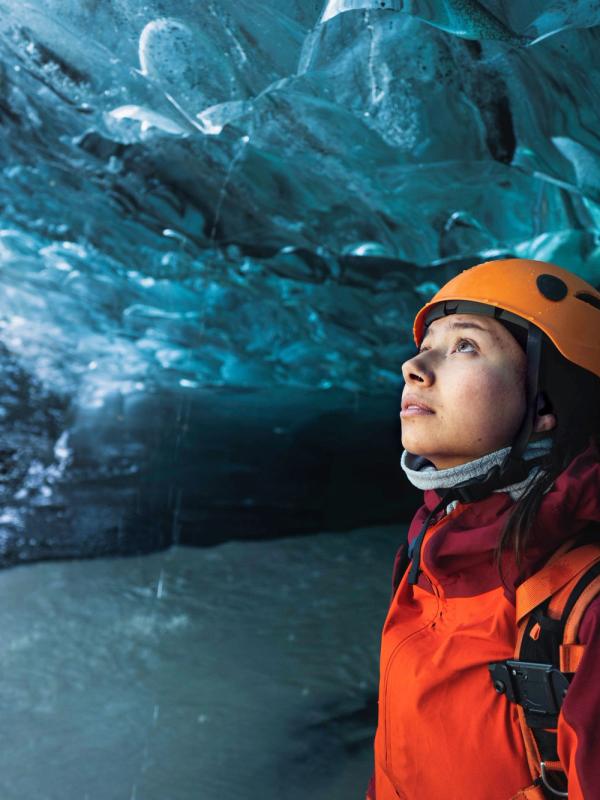
Iceland in March: Top Tips for a Memorable Winter Trip
Ready to spice up your year with a thrilling adventure? Why not head to the enchanting landscapes of Iceland? March is a time of wonder in this Nordic island nation, a time when the harsh winter gradually gives way to the gentler spring, yet still offers a chill that’s sure to invigorate your senses. Imagine yourself wrapped in warm layers, standing under a sky ablaze with the ethereal beauty of the Northern Lights. Sounds like a dream, isn’t it?
Well, it’s a dream that can come true! Visiting Iceland in March is like stepping into a magical realm where nature is still in command. From awe-inspiring natural phenomena to deeply ingrained cultural traditions, Iceland in March offers an enchanting blend of experiences that stay with you long after the snow has melted. Ready for the journey of a lifetime?
Key Takeaways
- March in Iceland offers a mix of unpredictable and pleasant weather, with 13 hours of daylight for outdoor activities.
- Explore stunning South Coast wonders & Golden Circle highlights, plus winter sports & cultural experiences with possibility of seeing the northern lights.
- Pack warm waterproof clothing and rent vehicles equipped with studded tires for an enjoyable trip.
What to know before visiting Iceland in March
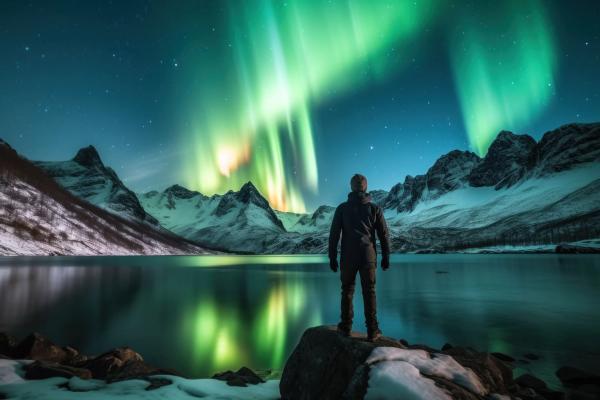
The weather in Iceland during March is quite an experience. Cold, wet, and snowy, it paints the landscapes with a frosty charm that takes your breath away. Add a sprinkle of Northern Lights dancing across the sky and you have a natural theater of sheer beauty. But it’s not just the cold weather that makes March in Iceland special. It’s also the cultural richness that envelops the country during this time.
The Icelandic culture, with its joyous Beer Day celebrations marking the end of the 1989 beer ban, and unique traditions such as “Bun Day,” “Explosion Day,” and “Ash Day,” offers a variety of experiences. Plus, March’s off-season pricing allows you to appreciate all these wonders at a lower cost. And if you’re a foodie, the Food and Fun Festival in Reykjavik is a must-visit, offering a chance to savor the best of Icelandic cuisine. So, pack your warm layers, brush up on local traditions, and get ready for a memorable trip to Iceland!
Weather and Climate in March
The weather in Iceland during March is unpredictable, much like a box of assorted chocolates. One moment, the skies might be clear and blue, and the next, a flurry of snow might transform everything into a winter wonderland. The temperatures range from a refreshing -2.2°C (28°F) to a cozy 3.3°C (38°F), offering a chilly yet pleasant climate for all your adventures.
Expect a mix of excitement with rain showers and snowfall throughout March due to the fluctuating precipitation and wind. This is something to keep in mind when planning your outdoor activities. However, the storms are fewer compared to the winter months, so you’re likely to have many beautiful days to enjoy Iceland’s stunning landscapes.
Temperature Range

The average temperature range in Iceland in March is quite mild, between -2.2°C and 3.3°C. But don’t let these numbers fool you. The temperature can fluctuate depending on various factors including:
- latitude
- ocean currents
- elevation
- weather systems
- daylight hours
- geothermal activity
So, while you might start your day with a chill in the air, by noon, you could be basking in the warmth of the sun.
The temperature varies by region but generally stays around freezing. In fact, the most extreme temperatures ever recorded in Iceland in March was -38°C (-36°F) in Grímsstaðir in 1918. So, while you might not experience such extremes, it’s always good to be prepared for a bit of a chill. After all, it’s the cold weather that adds to the charm of visiting Iceland in March.
Precipitation and Wind
March in Iceland can be a little wet and windy. This means you’ll want to pack a waterproof jacket and sturdy boots to keep you dry and comfortable. The average precipitation in Iceland in March is a generous 3.3 inches (84 millimeters) per day. This can come in the form of both rain showers and snowfall, so be prepared for a bit of both!
March’s average wind speeds in Iceland, which range from 13.5 to 15.0 miles per hour in Reykjavík, are quite refreshing. While this might sound a bit daunting, it adds an element of excitement to your adventures. Plus, there’s nothing quite like the feel of a cool Icelandic breeze on your face!
Daylight Hours in March
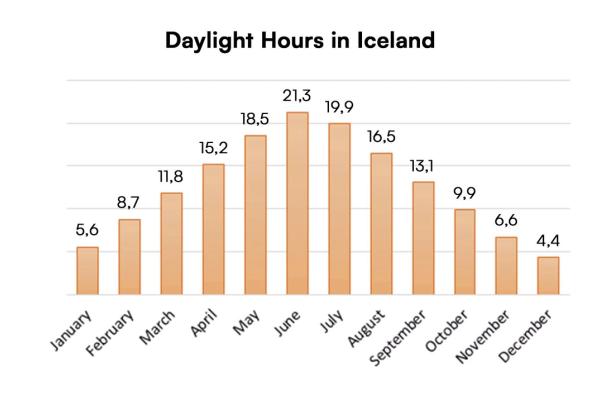
Another incentive to visit Iceland in March is the extended daylight hours. Throughout March, the days gradually get longer, with an extra 10 minutes of light added each day. By the end of the month, you can look forward to around 11 to 13 hours of daylight. This means more time to explore the stunning landscapes, more time for outdoor activities, and more time to soak in the breathtaking beauty of Iceland.
With the sun rising around 7:42 AM and setting around 7:31 PM at the beginning of the month, and then rising at a cheerful 7:58 AM and setting at a pleasant 7:45 PM by the end, you’ll have plenty of daylight hours to make the most of your trip. So, whether you’re planning to hike a glacier, explore a city, or simply sit back and enjoy the view, you’ll have ample daylight to do so.
Sunrise and Sunset Times
The sunrise and sunset times in March are truly a treat for those who love to start their day early and end it late. In early March, the sun graciously rises around 7:42 AM and sets around 7:31 PM in Iceland. But by the end of the month, the sun is up by a cheerful 7:58 AM and doesn’t set until a pleasant 7:45 PM. This gives you plenty of daylight hours to embark on your adventures.
What’s more, the changing sunrise and sunset times throughout the month mean that you’ll get to enjoy a variety of stunning landscapes bathed in different shades of light. From the early morning hues of sunrise to the golden glow of sunset, each moment brings a new spectacle of beauty. So, whether you’re an early bird or a night owl, you’re sure to find a time of day that captures your heart.
Making the Most of Daylight
With the increase in daylight hours in March, there’s more time to discover and engage in various outdoor activities. The longer days give rise to extended hiking trips, sightseeing, and photography opportunities. Furthermore, the increase in daylight hours provides more time for outdoor sports and recreational activities such as skiing, snowboarding, and ice climbing.
The extended daylight hours in March significantly enhance the overall outdoor experience in Iceland. So, whether you’re planning to explore the South Coast wonders or the Golden Circle highlights, you’ll have ample daylight to do so. Just remember to plan your activities accordingly to make the most of the available daylight hours.
Must-Visit Attractions in March
Iceland has a wealth of must-visit attractions to offer, especially during Iceland March. From the stunning South Coast wonders to the awe-inspiring Golden Circle highlights, there’s something for everyone. Whether you’re a nature lover, a history buff, or an adventure enthusiast, you’ll find plenty of attractions to keep you entertained.
One of the highlights of visiting Iceland in March is the opportunity to explore the South Coast. This region is home to some of the most breathtaking landscapes in the country, including waterfalls, glaciers, and black sand beaches. But that’s not all! The Golden Circle route is another must-visit. This iconic route showcases beautiful landscapes steeped in history and folklore. So, whether you prefer the quiet beauty of the South Coast or the historic charm of the Golden Circle, you’re in for a treat.
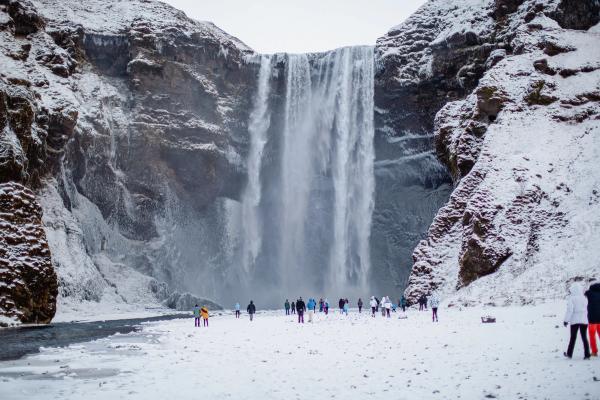
South Coast Wonders
Iceland’s South Coast is brimming with natural wonders. From the beautiful waterfalls of Seljalandsfoss and Skogafoss to the stunning glaciers of Eyjafjallajokull and Solheimajokull, this region is a paradise for nature lovers. But the wonders don’t stop there. The South Coast is also home to picturesque coastal features like the Dyrholaey rock arch and the Reynisdrangar sea stacks.
The South Coast is home to several unique sights that you should include in your Iceland trip in March:
- Ytri Tunga beach
- Londrangar basalt cliffs
- Snaefellsjokull glacier and volcano
- Arnarstapi fishing village
- Hellnar fishing village
- Kirkjufell mountain
Each of these sights offers a unique experience that you’re sure to cherish, including an unforgettable whale-watching tour. So, when planning your Iceland trip in March, make sure to include the South Coast in your itinerary.
Golden Circle Highlights
The Golden Circle route is another must-visit when you’re in Iceland. This iconic route features some of the most famous sights in the country, including Thingvellir National Park, Geysir Geothermal Area, and Gullfoss Waterfall. Each of these locations offers a unique glimpse into the natural and cultural heritage of Iceland.
Thingvellir National Park is an absolute must-visit location in the Golden Circle due to its remarkable natural beauty and historical significance. Geysir Geothermal Area, on the other hand, is renowned for its remarkable geological characteristics, including intermittent eruptions of hot water and steam from the ground. And Gullfoss Waterfall? Well, it’s just a sight to behold! So, when you’re planning your visit, make sure to include the Golden Circle in your itinerary.
Exciting Activities and Tours in March
A visit to Iceland in March isn’t solely about sightseeing, it’s also about engaging in thrilling activities and tours to make your trip truly unforgettable. From winter sports to cultural experiences, there’s plenty to keep you entertained. Whether you’re an adrenaline junkie or a culture vulture, you’re sure to find something that tickles your fancy.
For instance, why not try your hand at snowmobiling or glacier hiking? Or maybe you’d like to try ice climbing? If you’re more into cultural experiences, why not attend local events and festivals such as the Food and Fun Festival, Battle of the Bands, and Moustache March? Whatever your preferences, you’re sure to find something that suits your taste.
Winter Sports and Adventures

March in Iceland offers a wide array of winter sports and adventures. You can enjoy snowmobiling on Langjökull glacier, Lake Mývatn, Mýrdalsjökull glacier, or Vatnajökull glacier. Or perhaps you’d prefer glacier hiking? Skaftafell, Vatnajökull National Park, and Langjökull Glacier are all popular destinations for this exciting activity.
But the fun doesn’t stop there. Ice climbing and exploring ice caves are popular activities in Iceland during the winter months, including the unique experience of an ice cave tour. So, whether you’re an experienced climber or a beginner, you’re sure to find a challenge that suits your skills in the ice caves. And after a day of adventure, what could be better than relaxing in one of Iceland’s hot springs or a hot tub under a sky lit up by the Northern Lights during your northern lights tour?
Cultural Experiences
Iceland in March is also a time for cultural celebrations. The Reykjavik Food and Fun Festival is a culinary event that invites renowned chefs from around the world to collaborate with local Icelandic restaurants to create innovative dishes with local ingredients. It’s a great way to sample the best of Icelandic cuisine while experiencing the vibrant local culture.
Then there’s Moustache March, an inspiring festival where men proudly stop shaving their facial hair to raise money and awareness for various causes. And let’s not forget the Battle of the Bands Festival, an exciting competition between up-and-coming bands from Iceland.
So, whether you’re a foodie, a music lover, or just someone who enjoys a good time, you’re sure to find an event that tickles your fancy.
Essential Packing Tips for March
There are a few key considerations when packing for a March trip to Iceland. The weather can be unpredictable, so it’s important to pack:
- Warm, waterproof clothing
- Layering clothing
- Waterproof jackets
- Warm clothing that will help you stay comfortable in the cold and wet weather.
In addition to clothing, you should also pack the right footwear and accessories. Waterproof and warm footwear and accessories are essential for an enjoyable trip to Iceland in March. This includes:
- Sturdy boots
- Warm socks
- Gloves
- Hats
to keep you warm and dry. So, before you head out on your adventure, make sure to pack accordingly.
Clothing Essentials
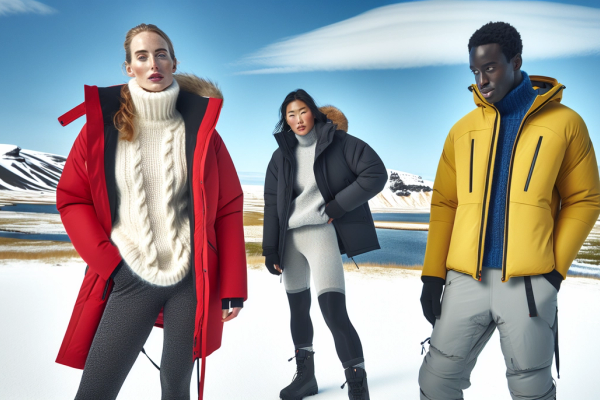
For clothing essentials during your March trip to Iceland, prioritize warmth and waterproof materials. Layering is key. Here are some items to consider:
- Base layer of thermal tops and bottoms for extra insulation
- Thinner lightweight sweaters or fleece sweaters for added warmth
- Winter jacket
- Waterproof trousers or ski pants to keep you dry and comfortable
It’s also important to pack accessories like gloves, hats, and scarves to stay warm. Opt for warm materials such as wool or thermal fabrics for these items. And don’t forget to bring woolen socks for maximum warmth and comfort. After all, keeping warm and dry is the key to enjoying your Iceland adventure.
Footwear and Accessories
Choosing the correct footwear is as vital as selecting proper clothing when packing for a March trip to Iceland. Sturdy, waterproof boots are a must to keep your feet warm and dry in the cold and wet weather. Brands like Columbia and Sorel are known for their quality and durability, making them excellent choices for your Iceland adventure.
In addition to footwear, you should also pack warm socks, gloves, and hats. These accessories will not only keep you warm, but also add an extra layer of protection against the cold and wind. So, whether you’re planning to explore the South Coast or the Golden Circle, make sure to pack the right footwear and accessories for your trip.
Driving and Road Safety in March

Driving in Iceland during March can be a thrilling adventure. The weather conditions can be unpredictable, and the roads can be icy and snowy. Therefore, it’s important to be prepared and to ensure your vehicle is up to the necessary standards. Renting a 4WD vehicle is recommended for better traction and stability. Also, make sure to check road conditions and closures often, as the weather can change rapidly.
Remember, safety is paramount when driving in Iceland. Here are some important tips to keep in mind:
- Always adhere to the speed limits
- Pay attention to weather warnings
- If you’re not comfortable driving in cold weather or icy conditions, consider joining a tour or hiring a local driver
This way, you can sit back, relax, and enjoy the stunning landscapes of Iceland without worrying about the road conditions.
Road Conditions and Closures
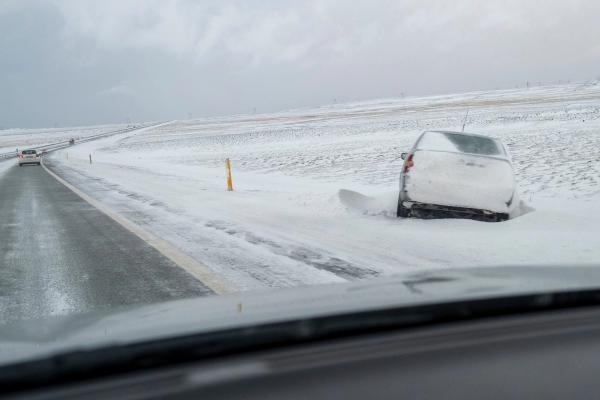
It’s important to be cognizant of possible road conditions and closures when planning a March trip to Iceland. The weather can bring snow, sleet, rain, and strong winds, which can affect the road conditions. Some roads and routes may be closed due to the winter season or for maintenance. Therefore, it’s always a good idea to check for any road closures before your trip to ensure a pleasant and smooth journey.
Fortunately, there are resources available to provide the most up-to-date information on road conditions and closures in Iceland. The Icelandic Road and Coastal Administration website is a reliable source for this information. It’s always a good idea to check this website regularly during your trip to stay informed about the current road conditions.
Vehicle Requirements
For vehicle requirements while driving in Iceland during March, it’s recommended to have a 4WD vehicle equipped with studded tires. A 4WD vehicle offers enhanced traction and stability, making it a great choice for navigating through the exciting weather conditions in Iceland. Renting a car can be a great option for experienced drivers who are comfortable driving in cold weather.
Studded tires offer tremendous stability and grip when driving in snowy conditions. The studs ensure that the tires maintain traction on snow and ice, providing superior control and minimizing the risk of sliding or skidding. So, when renting a car, make sure to request studded tires for an even better grip to ensure a safe and enjoyable trip.
Summary
As we’ve seen, visiting Iceland in March offers a unique blend of natural beauty, cultural richness, and thrilling adventures. From the ethereal beauty of the Northern Lights to the icy splendor of the glaciers, from the vibrant cultural festivals to the exhilarating winter sports, Iceland in March is truly a destination like no other.
So, pack your warm layers, brush up on your driving skills, and get ready for an unforgettable journey. Whether you’re exploring the South Coast, traversing the Golden Circle, or simply soaking in a hot tub under the Northern Lights, you’re sure to have an adventure of a lifetime in Iceland this March.
